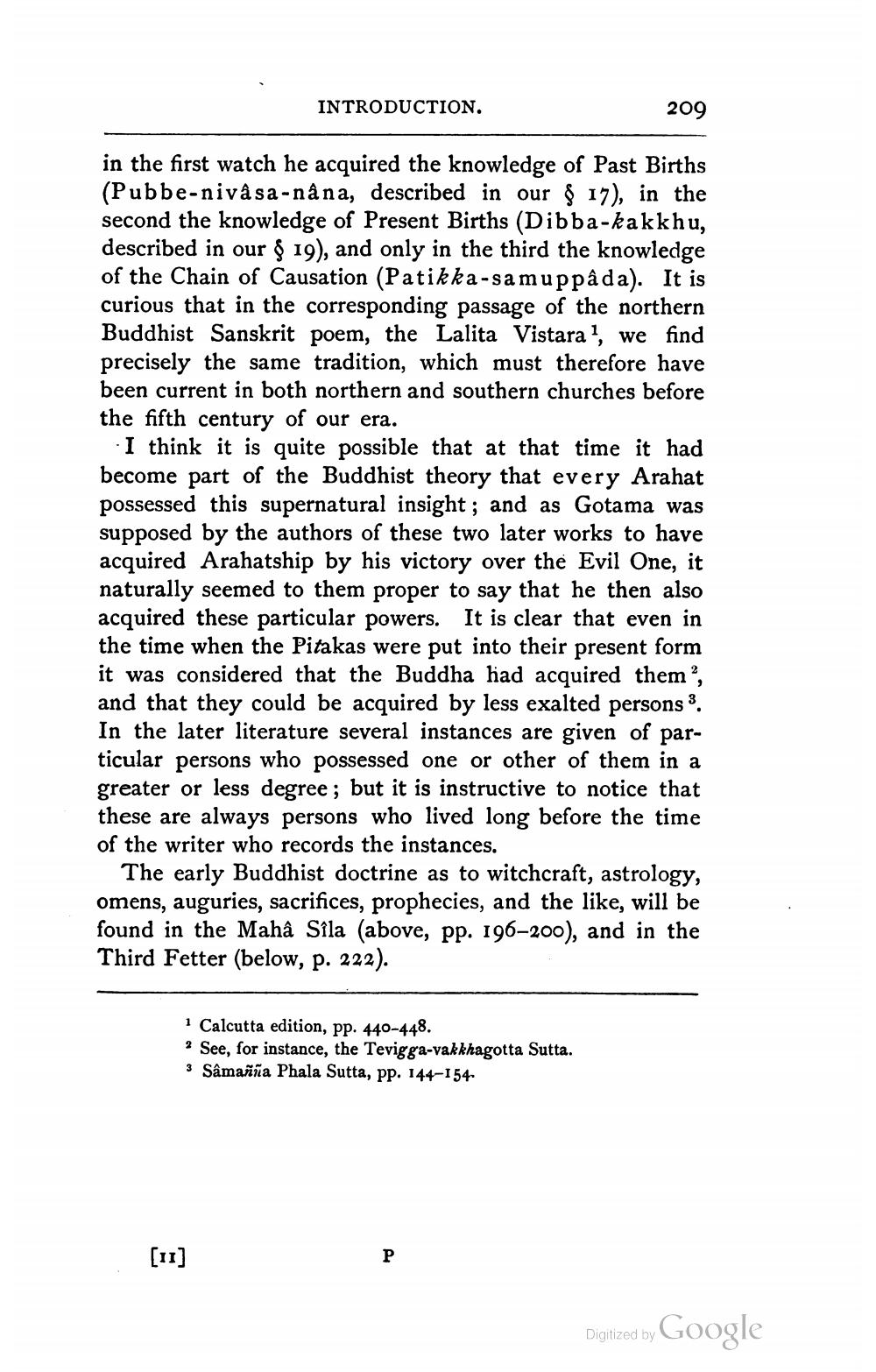________________
INTRODUCTION.
in the first watch he acquired the knowledge of Past Births (Pubbe-nivâsa-nâna, described in our § 17), in the second the knowledge of Present Births (Dibba-kakkhu, described in our § 19), and only in the third the knowledge of the Chain of Causation (Patikka-samuppâda). It is curious that in the corresponding passage of the northern Buddhist Sanskrit poem, the Lalita Vistara1, we find precisely the same tradition, which must therefore have been current in both northern and southern churches before the fifth century of our era.
I think it is quite possible that at that time it had become part of the Buddhist theory that every Arahat possessed this supernatural insight; and as Gotama was supposed by the authors of these two later works to have acquired Arahatship by his victory over the Evil One, it naturally seemed to them proper to say that he then also acquired these particular powers. It is clear that even in the time when the Pitakas were put into their present form it was considered that the Buddha had acquired them", and that they could be acquired by less exalted persons 3. In the later literature several instances are given of particular persons who possessed one or other of them in a greater or less degree; but it is instructive to notice that these are always persons who lived long before the time of the writer who records the instances.
The early Buddhist doctrine as to witchcraft, astrology, omens, auguries, sacrifices, prophecies, and the like, will be found in the Maha Sila (above, pp. 196-200), and in the Third Fetter (below, p. 222).
1 Calcutta edition, pp. 440-448.
2 See, for instance, the Tevigga-vakkhagotta Sutta.
3 Sâmañña Phala Sutta, pp. 144-154
[II]
209
P
Digitized by
Google




